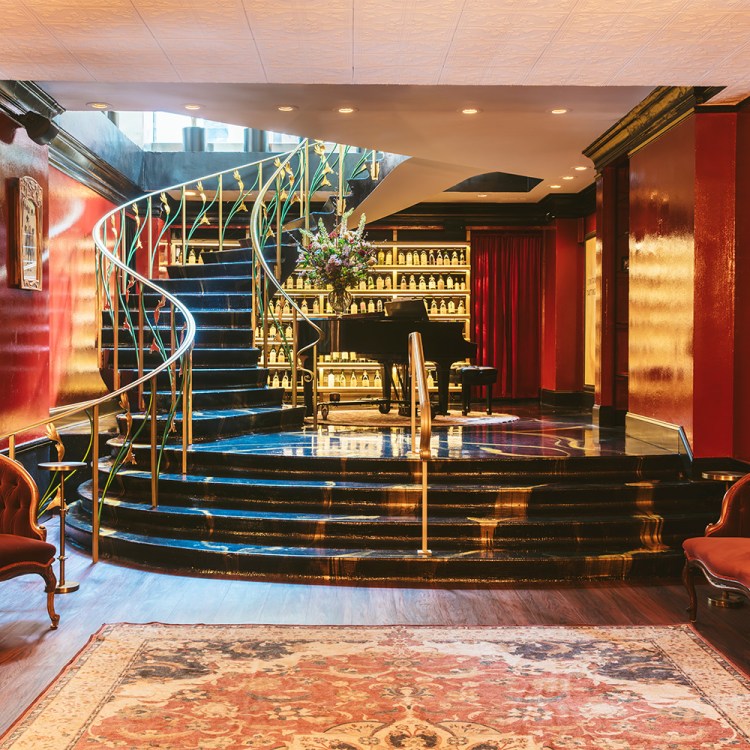Speak about seasons to most Americans, and aside from the odd Hallmark or Insta addition (read: #spookyszn), things tend to be quite simple — with the year neatly divided in four, contention limited to whether you say “fall” or “autumn.” But in Japan, the 24 sekki are further subdivided into 72 kō for a panoply of microseasons with descriptions poetically evocative in their specificity. Take the sekki of kanro (cold dew), which is further subdivided into Kōgan kitaru (wild geese return), Kiku no hana hiraku (chrysanthemums bloom) and Kirigirisu to ni ari (crickets chirp around the door).
It is with these microseasons in mind that Julia Momosé builds the cocktail menu at her Kumiko.
“I feel like in Chicago especially, you can buy pretty much anything at any time no matter the season, no matter where you’re living,” she says. “That sense of seasonality, and that sense of being at a certain place at a certain time is kind of disappearing in a way, just because of how accessible everything is.”
Instead of gearing up for massive seasonal changes (Read: pumpkin spice-ifying everything before the A/C has even been shut off) Momosé aims for subtler swaps that reflect the reality of the slow progression of incremental shifts.
“It’s taking some leftover blueberry vinegar from a dish on the menu and turning that into a syrup to make a cocktail that’s only available until that’s gone, and creating our own kind of microseason in doing that,” she says. “Or just leaning into apples and sweet potatoes and carrots and other incredible root vegetables over the fall and winter.”
And seasonality isn’t always about the harvest. By capitalizing on time-honored Japanese fermentation techniques, Momosé takes advantage of ume, also known as Japanese plum, though, she notes, it’s more closely related to the apricot. While ume comes into season in mid-May, it cannot be eaten straight from the tree, requiring pickling or infusing to enjoy.
“[It’s a matter of] finding farms who are growing them and then ordering them at just the right time so that they arrive and they’re still plump and green and ready for infusing,” she says. “And then it’s that waiting and anticipation to taste them each year.”
How to Celebrate New York Bartender Week
Our picks for what to drink during the weeklong celebration of all things NYOf course, the ephemeral quality of many of her drinks can lead to occasional disappointment among regulars. The Japanese Sochu Old Fashioned, for example, is made with sweet potato-infused sochu, Okinawa black sugar and cardamom. It’s been a fan favorite since the bar first opened, but it’s only available for a few short weeks each year.
“We just do it after the autumn equinox, and then until the snow is starting to melt,” says Momosé. “And when the umes start to bloom in Japan, that’s kind of when I take it off the menu.”
But while she notes that “people are sad when it comes off,” its disappearance always paves the way for something new.
It’s perhaps in part due to this hyper-attention to seasonality that Kumiko was recently listed on the 50 Best Bars in the World — the only Chicago spot to get a nod.
“I think I was shocked, to be sure,” says Momosé of the recognition. “The fact that people took the time to come and visit us really means a lot. And that it resonated with them is huge for me.”
When this Kyoto native isn’t hard at work crafting award-winning seasonal cocktails, you may find her at one of her favorite Chicago spots, enjoying flavors from home. Here are her top picks.
For sushi:
“Jinsei Motto is an amazing sushi spot that opened up inside of CH Distillery over the pandemic. It has an omakase counter and space in that distillery, and it’s just really incredible people and food.”
“There’s also 312 Fish Market which is a little fish spot inside of 88 Marketplace, which is a Chinese market or fish store close to where I live. It’s just simple, no frills, and really delicious, and it really reminds me of home. It doesn’t have to be a $500 sushi meal. It can just be simple, inside of a grocery store, and ordering à la carte. But eating there is so grounding for me.”
For ramen:
“Wasabi in Logan Square. They have really beautiful comfort food and miso ramen. In the West Loop, at Takeya, they do a lighter, chicken-based ramen, which is nice, and they also have some of the best gyoza, they do a hanetsuki gyoza, which is where you pour a cornstarch slurry into the pan, and so when they take it out, they have this beautiful crispy lace on the bottom. It’s perfect.”
For homestyle cooking:
“There’s a place called TenGoku Aburiya. It’s izakaya style, but they have great fish and do obento sets for lunch, which is really fantastic and definitely a taste of home.”
This article was featured in the InsideHook Chicago newsletter. Sign up now for more from the Windy City.

























